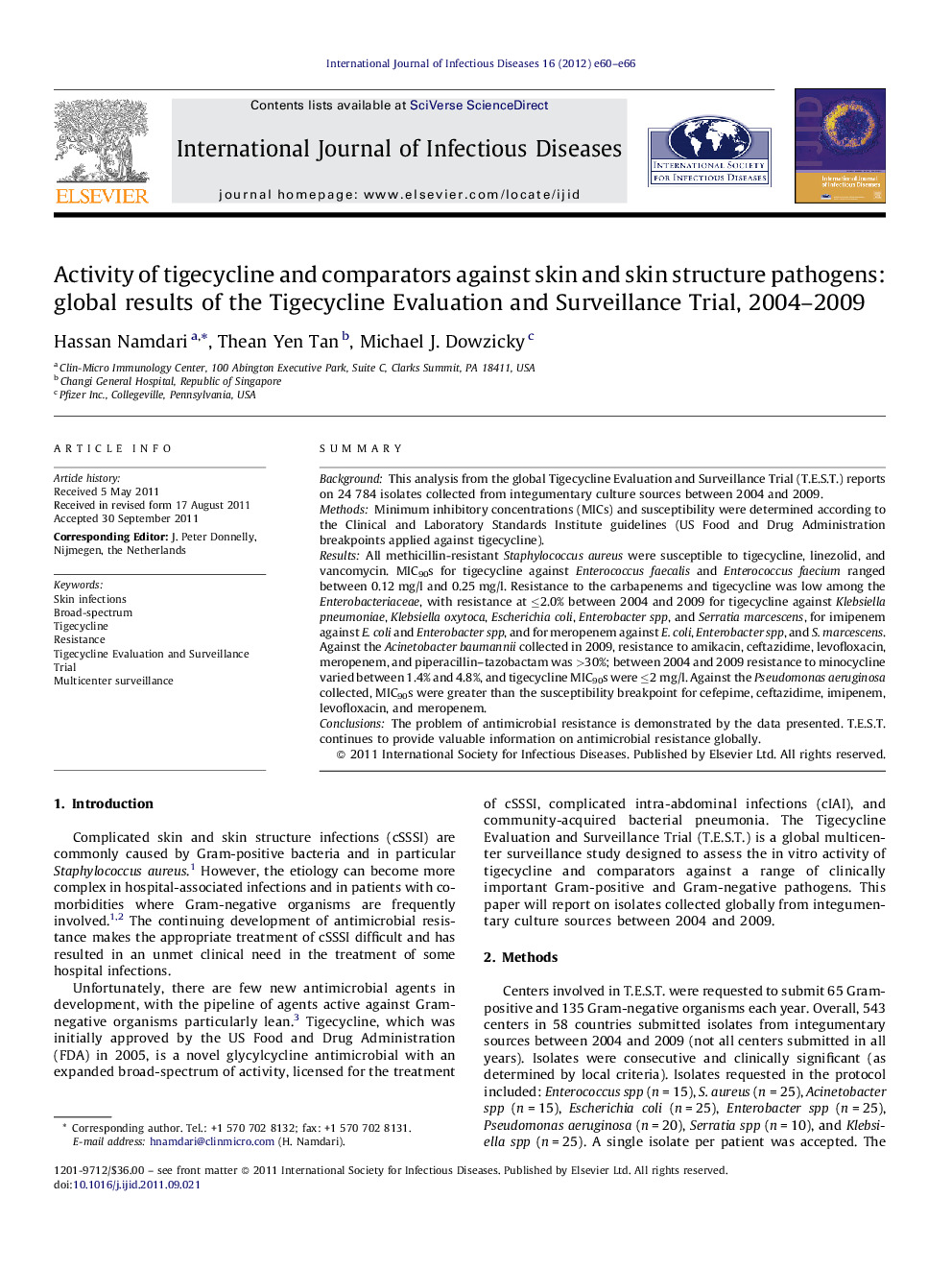| Article ID | Journal | Published Year | Pages | File Type |
|---|---|---|---|---|
| 3363302 | International Journal of Infectious Diseases | 2012 | 7 Pages |
SummaryBackgroundThis analysis from the global Tigecycline Evaluation and Surveillance Trial (T.E.S.T.) reports on 24 784 isolates collected from integumentary culture sources between 2004 and 2009.MethodsMinimum inhibitory concentrations (MICs) and susceptibility were determined according to the Clinical and Laboratory Standards Institute guidelines (US Food and Drug Administration breakpoints applied against tigecycline).ResultsAll methicillin-resistant Staphylococcus aureus were susceptible to tigecycline, linezolid, and vancomycin. MIC90s for tigecycline against Enterococcus faecalis and Enterococcus faecium ranged between 0.12 mg/l and 0.25 mg/l. Resistance to the carbapenems and tigecycline was low among the Enterobacteriaceae, with resistance at ≤2.0% between 2004 and 2009 for tigecycline against Klebsiella pneumoniae, Klebsiella oxytoca, Escherichia coli, Enterobacter spp, and Serratia marcescens, for imipenem against E. coli and Enterobacter spp, and for meropenem against E. coli, Enterobacter spp, and S. marcescens. Against the Acinetobacter baumannii collected in 2009, resistance to amikacin, ceftazidime, levofloxacin, meropenem, and piperacillin–tazobactam was >30%; between 2004 and 2009 resistance to minocycline varied between 1.4% and 4.8%, and tigecycline MIC90s were ≤2 mg/l. Against the Pseudomonas aeruginosa collected, MIC90s were greater than the susceptibility breakpoint for cefepime, ceftazidime, imipenem, levofloxacin, and meropenem.ConclusionsThe problem of antimicrobial resistance is demonstrated by the data presented. T.E.S.T. continues to provide valuable information on antimicrobial resistance globally.
